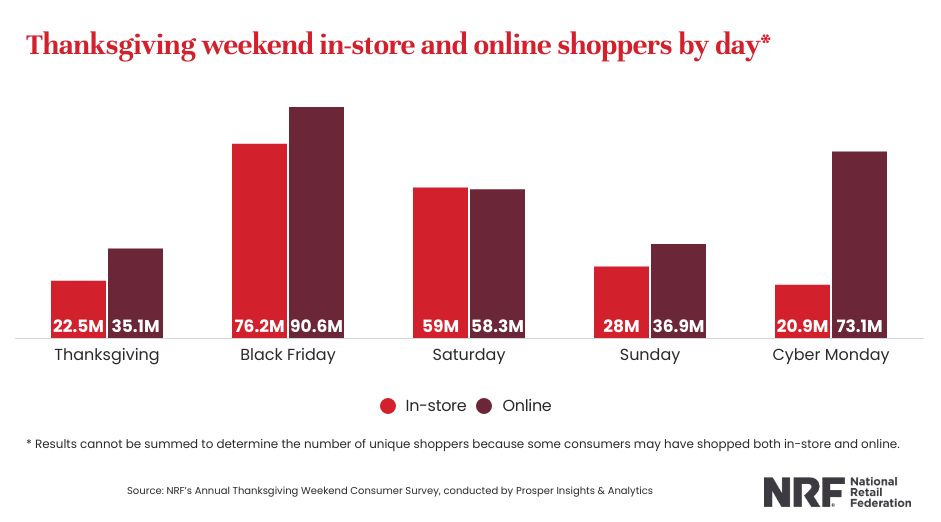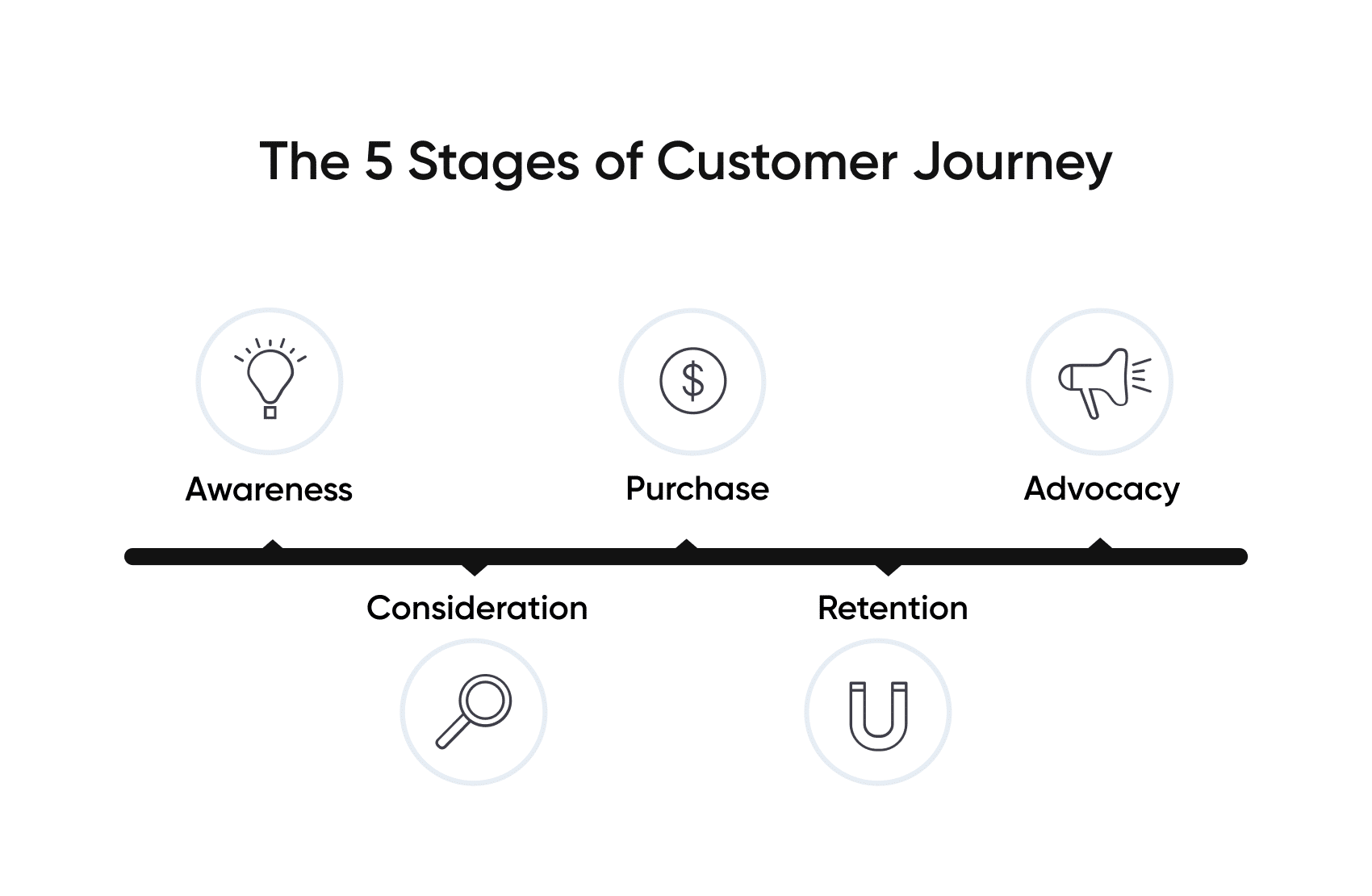Boosting Conversions: A how-to guide for enterprise retailers

Boosting conversions and average order values (AOV) requires modern and flexible commerce services to enhance product discovery, streamline purchases, and elevate the post-purchase experience.
Real-time inventory, pricing, promotions, and product enhances the customer experience, while e-commerce KPIs can measure the effectiveness of strategies across various stages of the customer journey.
Customers that migrated from legacy technologies to fabric experienced a 20% uptick in conversion rates. Similarly, customers that opened up inventory through fabric’s dropship service saw a 7% increase in average order values (AOV).
With fabric’s composable services, retailers have the flexibility to adopt as few or as many commerce services they want—when needed—to create world-class shopping experiences that delight their customers.
Happy Holidays from fabric!
This season, don’t let your legacy monolithic tech stack land you on the naughty list. Modern commerce services can enrich the shopping experience for your customers.
Get on the nice list! Read on to learn how!
With the hustle and bustle of the Cyber 5 shopping season still fresh in retailers’ mind, and as we enter the home stretch of this holiday season, it’s important to take a moment to reflect on what worked and what still needs improvement for the overall customer shopping experience.
For example, having a multi-channel sales presence was more important than ever as customers wanted convenience to shop where they wanted, how they wanted. According to the National Retail Federation, consumers utilized both online and in-store channels over the five-day holiday weekend from Thanksgiving Day through Cyber Monday, with 121.4 million people visiting physical retail locations and 134.2 million people shopping online.

Meanwhile, omnichannel fulfillment options remained popular with consumers. According to data from Adobe, curbside pickup and BOPIS was used in 12.7% of all online orders during Cyber 5.
For retailers that want to convert more browsers to buyers, addressing these key areas are critical for optimizing the customer journey and driving more sales. But what are some other strategies that can help boost conversions for enterprise retail businesses?
[toc-embed headline=”Conversion rates, average order values, and other important KPIs”]
Conversion rates, average order values, and other important KPIs
Before we dive into strategy, it first helps to know what key performance metrics retailers may want to improve. A few e-commerce KPIs that retailers should track include:
- Conversion rate: The percentage of website visitors who complete a desired action, such as making a purchase, measuring the effectiveness of turning visitors into customers.
- Average order value (AOV): The average amount spent by a customer in a single transaction, providing insights into purchasing behavior and revenue generation.
- Cart abandonment rate: The percentage of online shoppers who add items to their cart but leave the website without completing the purchase, indicating potential friction points in the buying process.
- Customer lifetime value (LTV): The total predicted revenue a customer is expected to generate over the entire duration of their relationship with a business, emphasizing the long-term value of a customer.
- Churn rate: The rate at which customers stop doing business with a company over a given period, revealing customer retention and loyalty trends.
To improve these metrics, retailers need to provide a great shopping experience to customers, which is where flexible and composable commerce services can help.
Commerce services to convert more traffic
More traffic to a store or website is great, but while this may indicate that ads and organic content are improving the awareness and consideration stages of the customer journey, retailers still need that traffic to convert and move through the purchase, retention, and advocacy stages of the customer journey.
Today, it’s not enough to simply slap on a new coat of paint to optimize a front end website experience. Beyond the look and feel of a website, it’s important to show up in the critical moments of intent throughout the purchase journey.
This requires the core elements of composable and modern commerce services to power the entire shopping experience from start to finish. For example, retailers choose fabric when they want to migrate away from legacy monolithic commerce platforms. After launching fabric’s services, our customers experienced a 20% increase in conversion rates. Similarly, retailers choose fabric’s dropshipping service to expand product assortment without inventory risk. By opening up inventory through fabric’s dropship service, our customers experienced a 7% increase in average order values (AOV).
With this in mind, let’s explore how modern commerce services can help businesses convert more traffic into sales.
[toc-embed headline=”How core commerce functions can optimize the customer shopping journey”]
How core commerce functions can optimize the customer shopping journey
When shoppers find what they want and have great pre- and post-purchases experiences, they feel delighted, engaged, and satisfied. Happy customers spend more and are more likely to return to your business.
Sounds simple enough, right?
Not quite!
While most businesses focus on building a great website storefront, the core commerce functions that actually power product discovery and the pre- and post-purchase experience are product, pricing, promotions, inventory, and orders (along with dropshipping, cart, and checkout).
With a suite of flexible and composable commerce services, retailers can modernize outdated legacy tech with best-of-breed technologies, such as a product information management (PIM) system, a pricing and promotions engine, an order management system (OMS), or a dropshipping service. By using these services, retailers can boost customer satisfaction across the product discovery, purchase, and post-purchase stages of the customer journey.
Enhancing product discovery
Product discovery refers to the process by which users find and explore products. Product recommendations is a powerful tool for enhancing product discovery while cross-selling, upselling, and product bundling can increase basket sizes and AOV. Below are a few other strategies for enhancing product discovery to boost conversions:
- Real-time inventory: Nothing is more frustrating for a customer than discovering a desired product is out of stock. fabric OMS is an order management solution that provides real-time inventory updates from source of truth systems, ensuring that customers are informed about product availability, fostering transparency and trust.
- Robust product information management (PIM) and product attributes: A system like fabric PIM can organize, manage, and enrich product data. With detailed product attributes, such as fit, size, color, and more, customers gain comprehensive and accurate information to make informed decisions, making them more likely to convert.
- Dynamic pricing: A modern pricing engine showcases real-time discounts, limited-time offers, and personalized pricing. fabric Offers is a highly flexible pricing, promotions, and coupon engine that not only boosts product discovery but also creates urgency for purchases.
- Dropshipping: Dropshipping allows retailers to expand their assortments into different products and categories without having to purchase inventory. It also allows retailers to backfill orders to capture sales without running out of stock.
- World-class product listing pages (PLPs) and product detail pages (PDPs): Engaging and visually appealing PLPs and PDPs are crucial. Well-designed pages require real-time inventory, pricing, product, and fulfillment data, making it easier for customers to browse and discover items of interest.
Streamlining purchases
As customers progress from product discovery to making a purchase, retailers must focus on creating a smooth and frictionless buying journey. In addition to allowing customers to change or cancel their orders, retailers need to provide clear delivery and pickup times and have transparent shipping costs, which prevents surprises and builds trust.
The following strategies can also enhance the experience, making customers more likely to hit the buy button:
- Coupons and promotions: Fast, accurate, and easy-to-apply coupons and promotions contribute to a positive buying experience for customers during checkout.
- Versatile fulfillment options: Retailers should offer various fulfillment options, such as shipping from the store, buy online, pickup in-store (BOPIS), or curbside pickup. This provides flexibility and convenience for customers to choose how they receive their purchases.
- Preorders and backorders: With fabric OMS, the ability to offer preorders and backorders helps with inventory management and allows retailers to capture sales when a customer would otherwise leave. By allowing customers to secure products before release or restock, these features not only generate anticipation and excitement but also enable retailers to optimize stock levels and drive conversions.
- Seamless cart and checkout: The worst thing that can happen is a bounce or cart abandonment during the final checkout process. However, errors or out of stock inventory drive customers away all the time. Real-time data syncing across product, pricing, inventory, and orders can help create a frictionless cart and checkout experience.
Elevating the post-purchase experience
Retailers must also deliver a seamless post-purchase experience. A modern OMS not only automates order confirmations and provides regular updates on order status and shipping details, it can provide frictionless returns and exchanges to customers as well. With a distributed order management (DOM) system, retailers can also use order fulfillment logic, or logic-based rules, to route orders to the best fulfillment locations to maximize speed and efficiency.
Additionally, here are several strategies that can enhance order processing, fulfillment, and customer support:
- Speed: Inventory that’s updated in batches every 15 minutes results in wildly outdated information that leads to inaccurate stock, cart abandonment, and lost sales. fabric OMS is a fastest-in-class order management solution that can handle hundreds of orders per second for thousands of locations. It features order orchestration, order routing, real-time inventory updates, and direct connections to source of truth systems for instant data syncing.
- Self-service configuration: Empowering merchants with the ability to self-serve and configure order routing—without writing code—is essential. This feature streamlines processes, allowing merchants to optimize order management according to their specific needs.
- Performance: Fast storefront APIs are required to facilitate communication between the online store and backend commerce systems. This allows for dynamic and real-time inventory and fulfillment updates to be reflected not just on the storefront, but other real-time systems as well.
- Enhanced customer support: Helpful customer support is a pillar of post-purchase satisfaction. To empower customer service representatives (CSRs) at help centers, fabric OMS includes powerful features such as assisted order placement, price adjustments, and the ability to apply discounts and promotions post-purchase.
[toc-embed headline=”fabric’s composable suite of services can transform your business”]
fabric’s composable suite of services can transform your business
By leveraging fabric’s composable commerce services, which include a native OMS and dropshipping service, retailers can unlock the potential for higher conversions, increased AOV, and enhanced revenues. With solutions that power product, pricing, promotions, inventory, orders, dropship, and cart and checkout, it is a flexible and powerful solution that empowers retailers to choose only the services they need to deliver exceptional experiences across the buyer’s journey.
To witness firsthand how fabric can transform your enterprise retail business, please contact us for a personalized demo. Or if you’d like to see us in person, you can also visit our booth at NRF 2024.
We’d love to see you there! Happy holidays!

Senior Vice President @ fabric. Previously, Head of Technology @ State of RI and Head of Retail Unit @ TCS.
